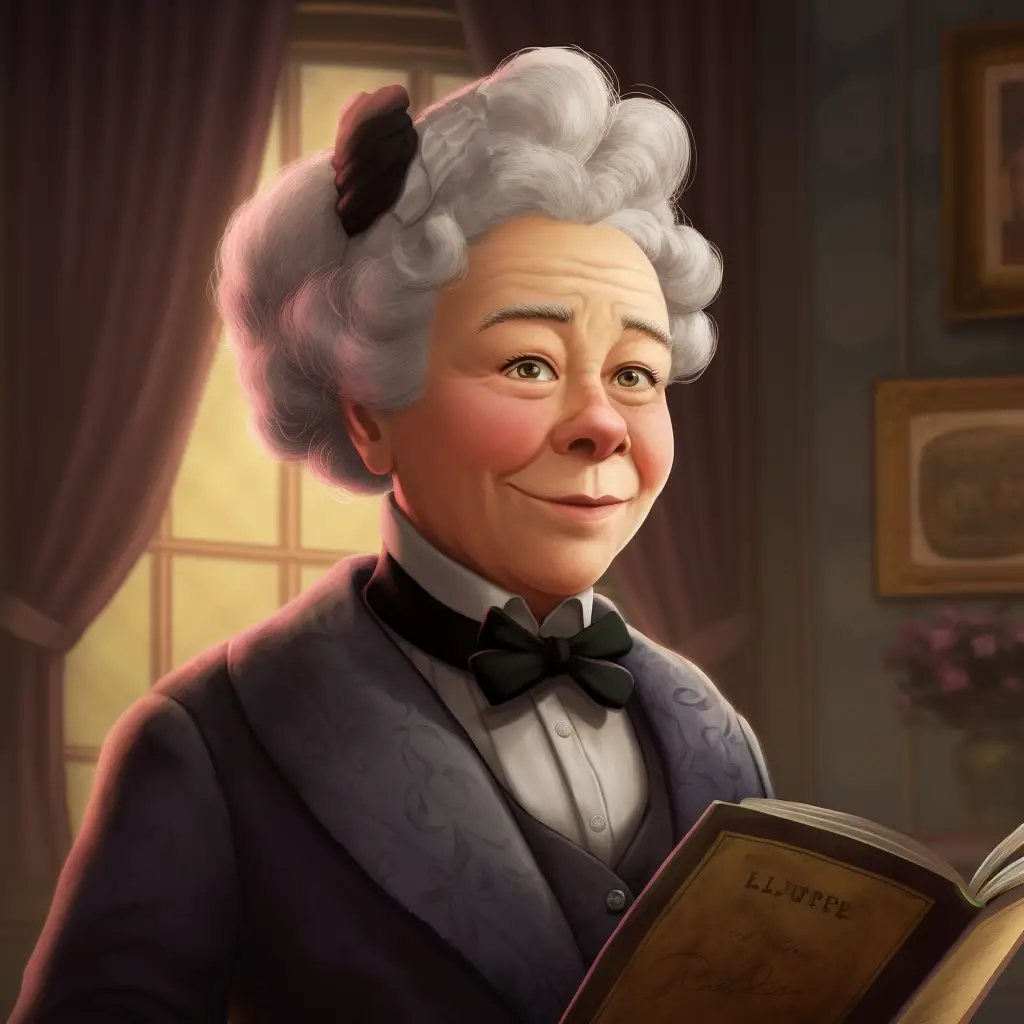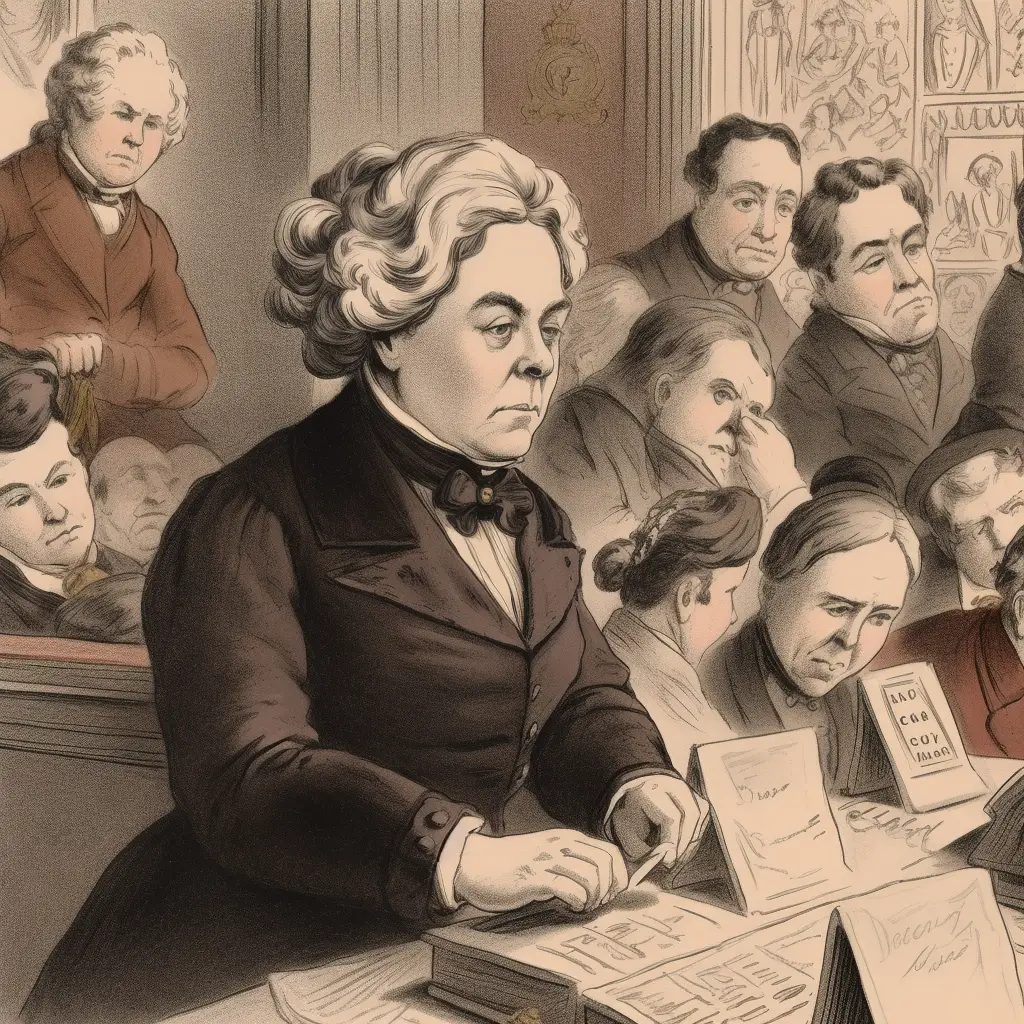Elizabeth Cady Stanton
Elizabeth Cady Stanton, born in 1815, was a granddaughter of a Revolutionary hero and had a passion for women’s suffrage. An abolitionist that believed in equality for women, she used her talent for writing to create the “Declaration of Sentiments” document that was the call to action for the revolutionary belief in women’s rights.
Elizabeth Cady Stanton was a prominent American suffragist, social activist, and abolitionist in the 19th century. She played a key role in the women’s rights movement, co-founding the National Woman Suffrage Association with Susan B. Anthony.
Stanton was also a prolific writer and speaker, advocating for women’s right to vote, own property, and receive education. Her legacy continues to inspire and empower women around the world.

Elizabeth Cady Stanton Facts for Kids
- Stanton was born on Nov 12, 1815, in New York.
- She was a leading figure in the women’s rights movement.
- Co-organized the 1848 Seneca Falls Convention.
- She helped to write the Declaration of Sentiments.
- Stanton was the first president of the National Woman Suffrage Association.
- Collaborated with Susan B. Anthony for women’s suffrage.
- Co-authored “History of Woman Suffrage” (1881).
- Advocated for divorce reform and women’s property rights.
- She died on Oct 26, 1902, in New York.
- Stanton was posthumously inducted into the National Women’s Hall of Fame.
Women’s Suffrage Movement
Elizabeth Cady Stanton was a central figure in the American Women’s Suffrage Movement. Born in 1815, she tirelessly advocated for women’s voting rights. One of her major achievements was co-organizing the Seneca Falls Convention in 1848, which marked the beginning of the women’s suffrage movement.
Here, she co-authored the Declaration of Sentiments, a document declaring women’s equal rights. Despite societal opposition, Stanton remained steadfast, contributing to the shift in public opinion that led to women’s voting rights in 1920.
Susan B. Anthony
Susan B. Anthony and Elizabeth Cady Stanton formed a significant partnership in the American Women’s Suffrage Movement. Meeting in the 1850s, Stanton’s ideas and writings paired with Anthony’s organizing skills, contributed to the growth of the suffrage movement.
Together, they founded the National Woman Suffrage Association in 1869 to fight for women’s voting rights at the federal level. Their combined efforts laid the groundwork for the eventual ratification of the 19th Amendment.
Lucretia Mott
Lucretia Mott, an established abolitionist, had a significant influence on Elizabeth Cady Stanton’s involvement in the Women’s Suffrage Movement. Meeting at an anti-slavery convention in 1840, their shared experiences led to the conception of the Seneca Falls Convention in 1848. The combination of Mott’s activism and Stanton’s radical ideas marked a pivotal moment in the women’s rights movement.
Lucy Stone
Lucy Stone, a prominent figure in the Women’s Suffrage Movement, collaborated closely with Elizabeth Cady Stanton to advance women’s rights. Stone’s powerful oratory skills and commitment to gender equality made her an influential advocate. While initially differing in some ideologies, their collaboration strengthened the movement. Together, they worked toward women’s suffrage and the broader fight for gender equality in the United States.
Seneca Falls Convention
The Seneca Falls Convention in 1848, largely influenced by Elizabeth Cady Stanton, marked the start of the American Women’s Suffrage Movement. Held in Seneca Falls, New York, Stanton introduced the Declaration of Sentiments at the convention.
This document, which she crafted, demanded equal social status and legal rights for women, including voting rights. The convention served as a major step in promoting dialogue about women’s suffrage, significantly credited to Stanton’s advocacy.
Rights Convention
Elizabeth Cady Stanton used rights conventions as platforms for advocating women’s rights, most notably the Seneca Falls Convention in 1848. At this convention, Stanton presented the Declaration of Sentiments, demanding equal rights for women.
Her involvement in these conventions helped shape the Women’s Suffrage Movement and solidified her leadership role in advocating for women’s rights.
Declaration of Sentiments
The Declaration of Sentiments, a crucial document in the American Women’s Suffrage Movement, was primarily drafted by Elizabeth Cady Stanton. Presented at the Seneca Falls Convention in 1848, the Declaration called for equal rights for women, including the right to vote.
Despite the controversy it caused, Stanton held firm in her beliefs. Thus, the Declaration of Sentiments represents Stanton’s bold vision for women’s equality and marked a key moment in the fight for women’s suffrage.
National Woman Suffrage Association

The National Woman Suffrage Association (NWSA), co-founded by Elizabeth Cady Stanton and Susan B. Anthony in 1869, was a key organization in the Women’s Suffrage Movement. Stanton, serving as its first president, led the NWSA in advocating for a constitutional amendment for women’s voting rights.
The organization’s efforts played a crucial role in changing societal attitudes toward women’s suffrage, leading to the eventual passage of the 19th Amendment.
The Nineteenth Amendment (U.S. Constitution)
The Nineteenth Amendment, prohibiting voting discrimination based on sex, was greatly influenced by Elizabeth Cady Stanton’s advocacy. Ratified in 1920, this achievement was built on Stanton’s efforts for women’s suffrage from the Seneca Falls Convention to her leadership in the National Woman Suffrage Association.
Although Stanton didn’t live to see its enactment, her work became a central part of the suffrage movement, making the amendment a testament to her vision.
Trailblazer for Women’s Rights in the 1800s
During the 1800s, women could not own property, did not have the right to vote in elections, and were considered ‘property’ of their husbands or fathers. Stanton was the daughter of an attorney who let her know that he had wanted a son, and so she led her life proving that she could equal men in intellectual and life existence. After graduating from the Emma Willard Troy Female Seminary in 1832, she was drawn to temperance, women’s rights, and abolitionist movements.
In 1840, she married Henry Stanton. While it is a common practice to remove the word ‘obey’ from the marriage vows today, it was incredibly revolutionary in 1840. They both shared the ideas of anti-slavery and attended many abolitionist meetings together.
Elizabeth had seven children, but this did not stop her from her pursuing equal rights for women. She was a main founder of the Seneca Falls Convention of 1848, which was a gathering of some of the top names in the women’s movement for discussion of the cause and resulted in the creation of the “Declaration of Sentiments” which expressed the demand for women to have voting rights.
Mentor and Leader in the Women’s Rights Movement
Stanton was a major influence and mentor (teacher) to Susan B. Anthony in the 1850’s who would become one of the most well-known leaders in promoting a woman’s right to vote as well as general rights including divorce. Stanton continued her writing and participated in many lectures for women’s rights.
The Civil War became the focus of the nation and interrupted the women’s movement. Stanton focused on continuing the cause for the abolishment of slavery. By 1868, Anthony and Stanton worked together to produce the militant newspaper publication called the “Revolution”.
They also formed the NWSA (National Woman Suffrage Association) in 1869, with Stanton as the first president. Later, the organization would merge with another group to become the National American Woman Suffrage Association and Stanton would serve as president of that group for two years.
Women’s Suffrage and ‘The Woman’s Bible

Stanton traveled giving lectures, calling for an amendment to the U.S. Constitution that gave women the right to vote. She and Anthony worked together to create the first three volumes of “The History of Woman Suffrage” (1881-6)
Problems occurred when Stanton, writing with her daughter, released “The Woman’s Bible”. She had long believed that religion played a major role in the suppression of women’s rights and with this publication she angered a number of religious groups and other women’s groups, sending them in the opposite direction for the movement.
Stanton is credited for bringing attention to the suffering of women and their lack of rights in the United States on a number of issues. She included government policies in her criticism all the way to a woman’s right to ride a bicycle. While she did not become as well-known as Anthony, she should be recognized as one of the major individuals that moved the fight for women’s rights to the front of the attention of the country.
Family
Elizabeth Cady Stanton’s family was central to her life and activism. Her father’s (Daniel Cady) legal profession shaped her understanding of women’s rights. Her marriage to abolitionist Henry Brewster Stanton further influenced her dedication to social reform.
As a mother of seven, Stanton’s advocacy for women’s rights was personal and urgent, desiring equal opportunities for her children. Her daughter, Harriot Stanton Blatch, continued her legacy in the Women’s Suffrage Movement.
Harriot Stanton Blatch
Harriot Stanton Blatch, Elizabeth Cady Stanton’s daughter, continued her mother’s legacy in the Women’s Suffrage Movement. Blatch advocated for women’s rights and revitalized the movement through strategies such as large-scale rallies.
She founded the Women’s Political Union in 1907, further advancing women’s suffrage. Her efforts contributed to the ratification of the Nineteenth Amendment in 1920.



